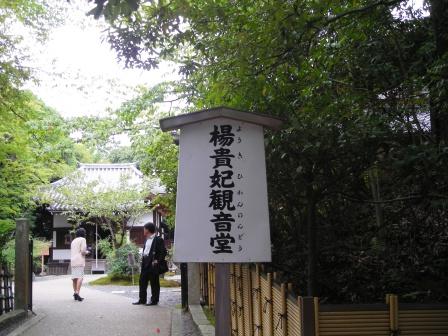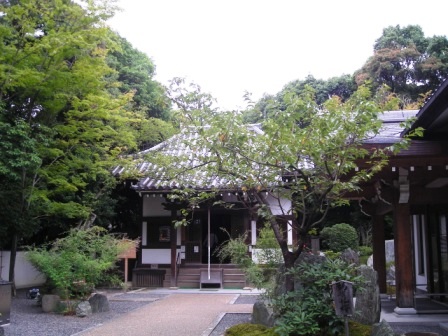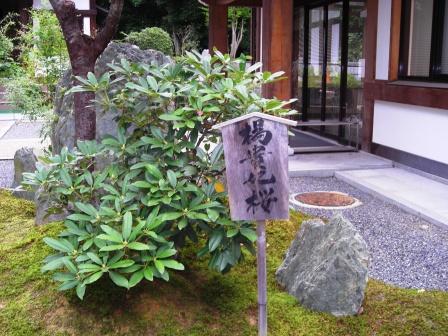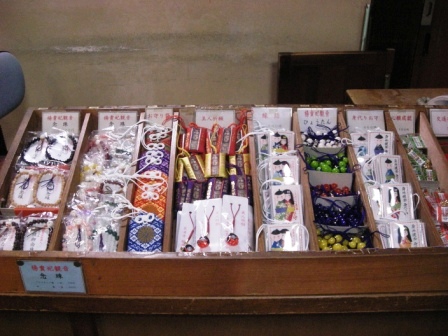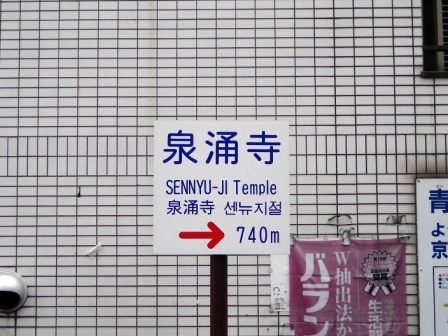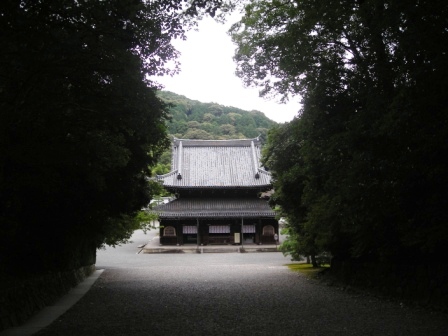 Sennyu-Ji Temple, 泉涌寺, Kyoto Sennyu-Ji Temple, 泉涌寺, Kyoto

At the Sennyu-Ji Temple, 泉涌寺 located near Mt. Tsukinowa in Kyoto 京都, Japan 日本. there is a sculpture of Guan Yin, 观音, believed to be modeled after Lady Yang Gui Fei or Lady Yang, 杨贵妃, the favorite concubine of Tang Ming Huang 唐明皇, a Chinese emperor of the Tang Dynasty 唐朝.
The monastery acquired its current name in 1218 when Priest Tsukinowa Shunjo renamed the temple after a clear spring nearby .
Priest Tsukinowa Shunjo studied Buddhism during Song dynasty 宋朝 in China and after he returned to Japan, he expanded the temple based on the Song Chinese architectural style. During this expansion, he renamed the temple as the Sennyu-Ji Temple. In 1242, Emperor Shijo was buried in the temple setting the precedent for later Japanese Emperors. Sennyu-Ji Temple became part of a royal mausoleum complex.
Immediately to the left of the temples main entrance and before the path to the main monastery complex, is the Yokihi Kannon-do hall, 杨贵妃观音堂, a hall dedicated to Guan Yin (Avalokitesvara) 观音. It is also known as the Empress Yang-Avalokitesvara Hall.
The Guan Yin sculpture enshrined in this hall is known as Empress Yang-Avalokitesvara, 杨贵妃观音菩萨, was brought to Sennyu-Ji Temple by Priest Tankai from Song dynasty China in 1255.
It is believed that this sculpture was commissioned by Emperor Tang Ming Huang after the death of Lady Yang and shows Lady Yang as the Guan Yin. When the sculpture first arrived at Sennyu-Ji Temple, it was only open to public view once every hundred years. Since 1956, it has been open to the public year round. The sculpture is now a national cultural treasure.
To the right of the main hall is a small stall where devotees and visitors can buy a range of Lady Yang related souvenirs. Around the complex are carefully landscaped gardens with a path leading to the main shrine.
In tourist maps and local train station maps, the Yokihi Kannon-do hall is marked separately and demonstrates the attraction of this hall in relation to other complexes in the monastery.
The Empress Yang-Avalokitesvara, 杨贵妃观音菩萨, was brought to Sennyu-Ji in 1255, 500 years after the death of Lady Yang. The Tang dynasty had already collapsed by then and been replaced by the new Song dynasty.
The arrival of the Empress Yang-Avalokitesvara sculpture indicated the popularity of Lady Yang in Japan long after she passed away. Even today, her story continues to be told and her sculpture continues to be visited showing the immense attraction of her tragic love story.
Related articles:

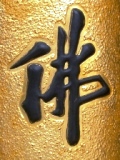
|

 Sennyu-Ji Temple, 泉涌寺, Kyoto
Sennyu-Ji Temple, 泉涌寺, Kyoto
